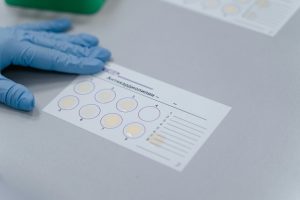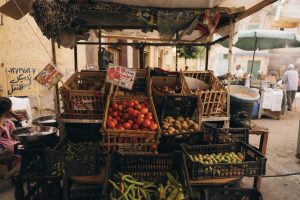Navigating the Challenges of Cooking with Dietary Allergies
If you or a loved one have dietary allergies, you know how challenging it can be to navigate daily life. From avoiding certain foods at restaurants to carefully reading labels at the grocery store, having dietary allergies requires constant vigilance. However, one of the most daunting challenges can be cooking meals that are both safe and enjoyable. In this article, we will explore the various challenges that come with cooking for individuals with dietary allergies, as well as provide tips and strategies for successfully navigating them.
The Rising Incidence of Dietary Allergies
Dietary allergies have become increasingly common in recent years, affecting millions of people around the world. In fact, according to the American College of Allergy, Asthma, and Immunology, food allergies now affect approximately 5% of adults and 8% of children in the United States. This rise in incidence can be attributed to a variety of factors, including changes in our food supply and increased awareness and diagnosis of food allergies.
Types of Dietary Allergies
There are many different types of dietary allergies, with the most common being allergies to peanuts, tree nuts, milk, eggs, wheat, soy, fish, and shellfish. These allergies can range from mild to severe, with some individuals experiencing potentially life-threatening reactions. It is important to note that dietary allergies are different from food intolerances, which do not involve the immune system. However, individuals with food intolerances may also need to follow strict dietary restrictions when cooking.
Reading and Deciphering Food Labels
When cooking with dietary allergies in mind, one of the most important skills to have is the ability to read and decipher food labels. In many cases, allergens may not be immediately obvious, and can be hidden in seemingly innocent ingredients. For example, some dairy-free products may still contain traces of milk proteins. It is crucial to carefully read the ingredient list of any product you plan to use in your cooking, and to be aware of other names for common allergens. Additionally, familiarizing yourself with common food labeling terms such as “may contain” and “made on shared equipment” can also help you make informed decisions when purchasing ingredients.
Substitution Strategies
Oftentimes, cooking with dietary allergies requires some creativity and flexibility. In many cases, ingredients that are commonly used in traditional recipes may need to be substituted with allergy-safe alternatives. For example, dairy milk can be substituted with almond, soy, or coconut milk, and wheat flour can be replaced with gluten-free flour blends. It may also be necessary to substitute certain ingredients if you have a combination of allergies, such as being both dairy and gluten-free. Luckily, there are many resources available for finding allergy-friendly recipes and substitutes.
Communication is Key
Whether you are cooking for yourself or for others with dietary allergies, communication is crucial. When dining out, be sure to inform your server of any allergens and ask about menu items that may be safe for you to eat. When cooking for others, it is important to have open and honest communication about your allergies and dietary needs. This not only ensures everyone’s safety, but also allows for better collaboration in meal planning and preparation.
In Conclusion
Cooking with dietary allergies certainly presents its own unique set of challenges. However, with careful planning, education, and communication, it is possible to successfully navigate these challenges and enjoy delicious, safe meals. By staying informed and being proactive, individuals with dietary allergies can continue to thrive in the kitchen and beyond.











